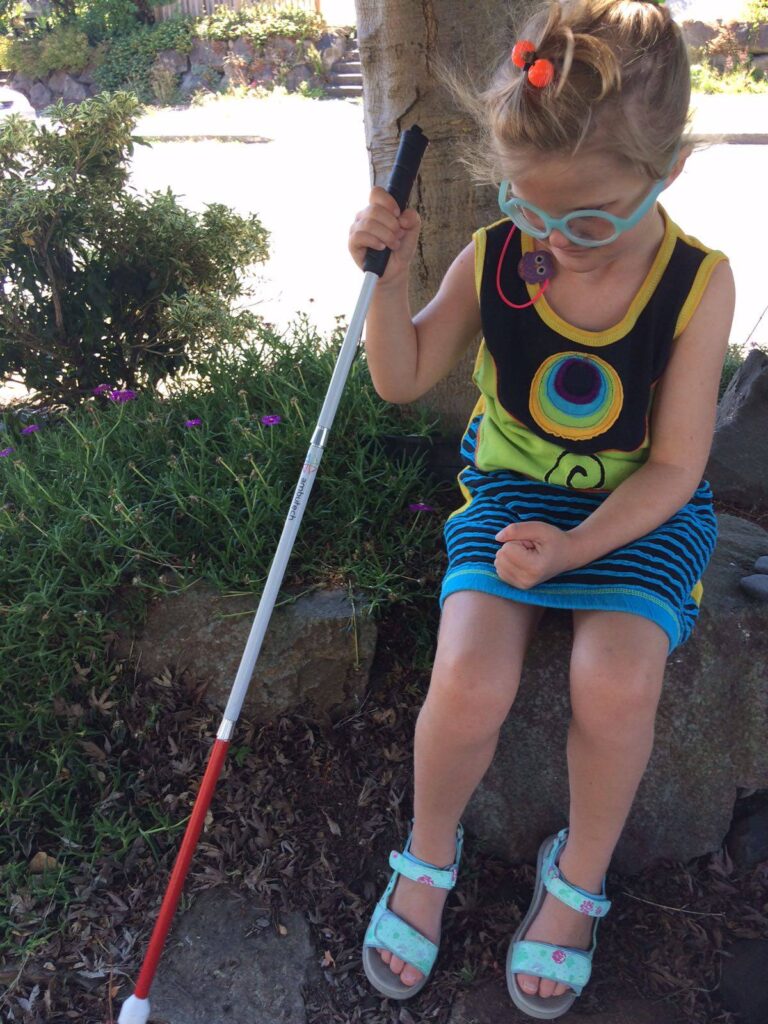
Greetings, all! It’s been a while and I have so many topics stored up in my head that I’m having trouble deciding where to start. Here’s a short but sweet post notifying you about this fabulous article on teaching cane strategy. It’s entitled “Using the teaching cane strategy with children who are DeafBlind.” It was published in 2009 by Marry Tellefson (MA, MS, TVI, COMS) of the Wisconsin Center for the Blind & Visually Impaired. I first read this article a couple years ago and it was so good that I find myself going back to reread it every few months. I love this article so much because it delves into all the complex layers of the white cane’s role in developing the DeafBlind child’s sense of autonomy and self-awareness: it is not just a navigation tool, it is a source of social-emotional belonging and confidence.
As hearing-sighted parents, we end up fielding a lot of questions on the white cane from friends, family, and random bystanders. I know our experience is common because I see other parents of DeafBlind kids complaining about it on social media. Like us, they get the typical inquiries… “Why does she need a cane if she wears glasses? Obviously she can see!” and, “Look, she can see this! She can see that!” Sometimes people ask us exactly how much she can see, like we can magically read her mind as parents and describe the unique nuances of her vision loss. Honestly, sometimes I even get these questions from fellow parents of DeafBlind kids: parents who have not come to terms with their child’s blindness because their vision is more usable than their hearing. It takes us sooo long to let go of our own sensory norm and put ourselves in our child’s shoes… or rather, to hold a white cane alongside them, as this article advocates!
I think the widespread ignorance about the white cane illustrates SO CLEARLY why we as families with DeafBlind kids need mentorship and training from DeafBlind service providers – they are the only ones that will effortlessly and comprehensively center our kids’ sensory existence and force us to do the same.
Here’s an excerpt from the beginning of the article that lays out the four major developmental areas that the white cane supports:
(1) access to sensory information; (2) communication and movement; (3) incidental learning, including concept development and mental imagery; and (4) emotional development, including sense of self, motivation, perception of safety, and isolation. The cane is a tool that addresses these areas of development by increasing the availability of sensory information to a child through auditory, tactile, kinesthetic, and vibratory feedback. Cane use promotes active movement, contact with the world, opportunities for exploration, and a sense of safety.
I hope check out the full article and put some of it into practice! And, as always, I am keen to think more about how these themes of empowerment through kinesthetic learning apply to typical kids just as much as disabled kids.
